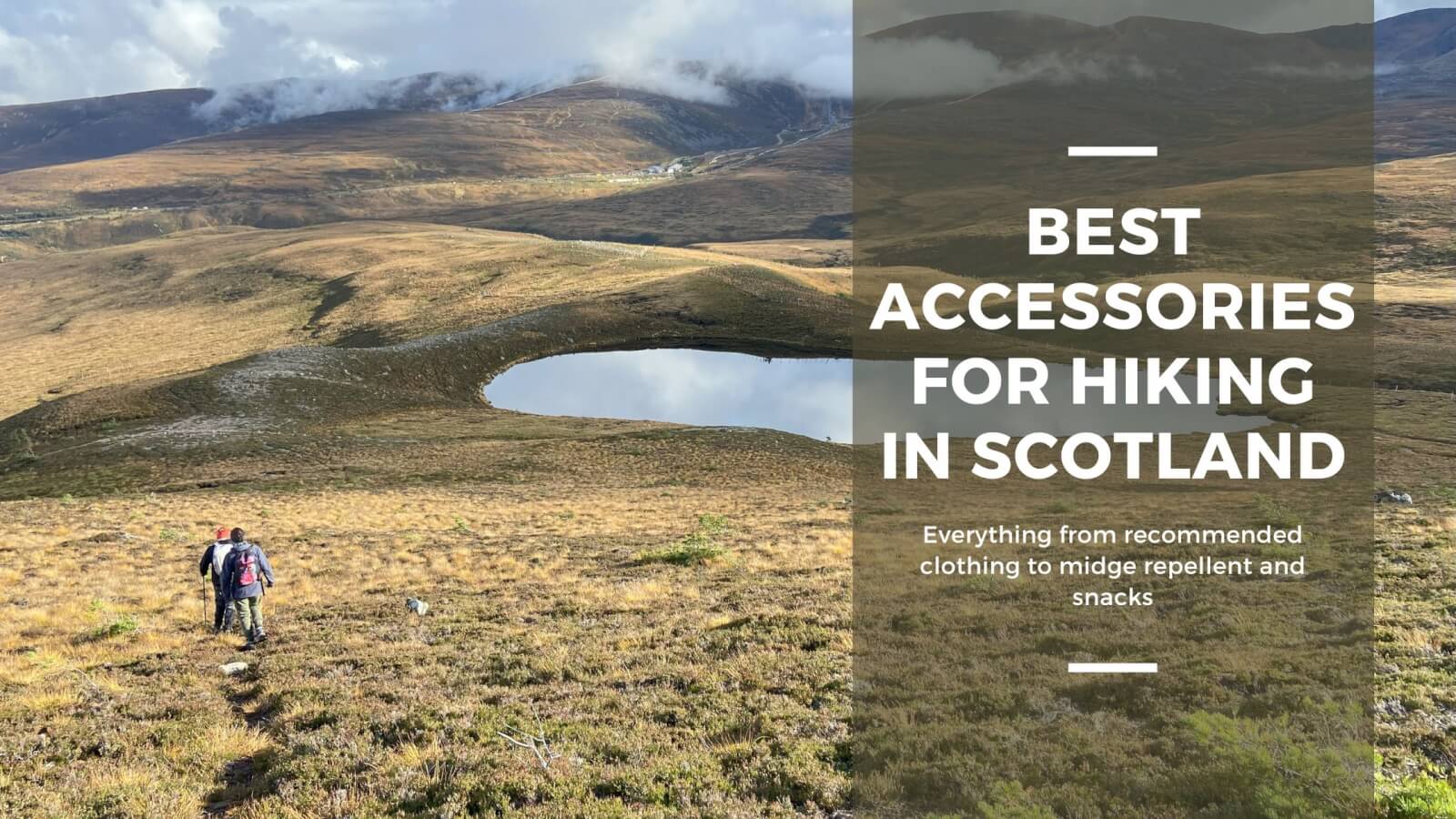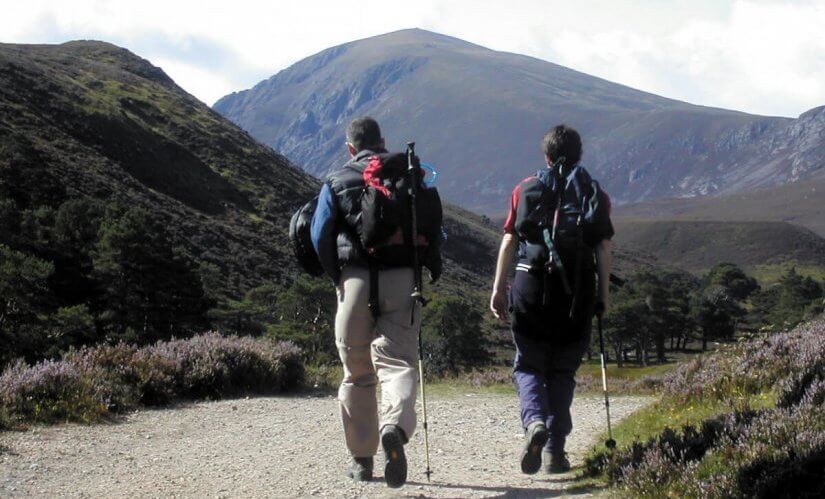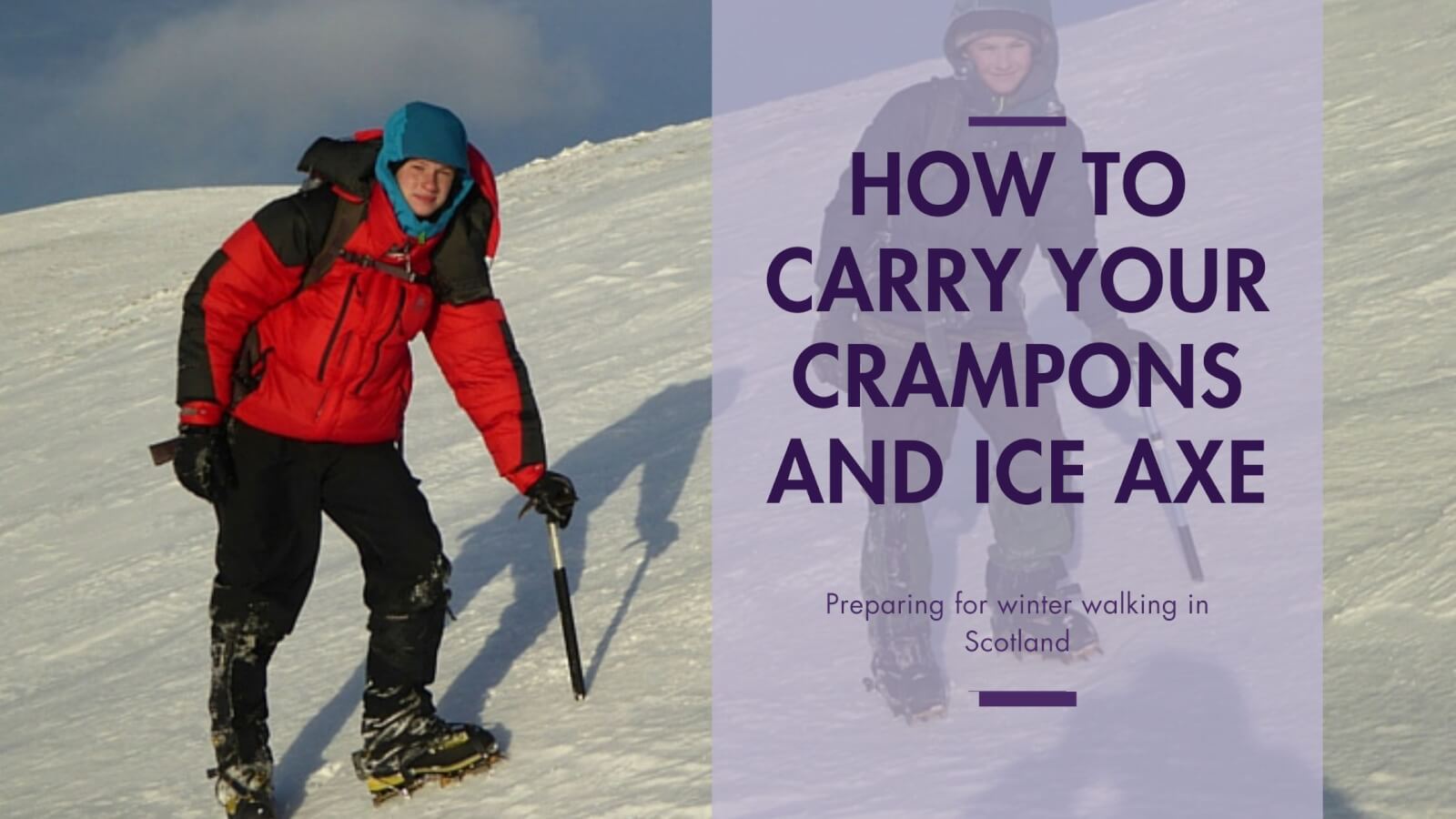OK – we thought we’d have a little fun with this blog and give you a few silly tips along side the more serious suggestions.
It’s Scotland – there weather is always unpredictable, but as they say – there’s no such thing as bad weather, just inappropriate clothing and I can vouch for that personally.
Ne’er cast a cloot till May’s out. what it actually means is, don’t take off your winter clothing until May is over!
.1. map & compass
80% of mountain rescue callouts stem from navigational errors. We know that there are mulitpe mapping apps available to help when you’re in the great outdoors – OS maps; Komoot, Outdoor Navigator to mention just a few; or Walk Highlands too if you’re looking for one specific to our area. But these all depend on your phone having good battery power; or you having packed a spare battery to back up your phone.
It is always best, especially if you’re in an area of poor phone reception, to carry a map and compass (so long as you have the skill set to use them effectively). If you do plan to walk on your own it’s probably best to make sure you have some basic navigation skills, before you head out the first time and use your phone as a back up rather than your primary navigation tool.
Further navigation reading:
Winter Navigation and its perils
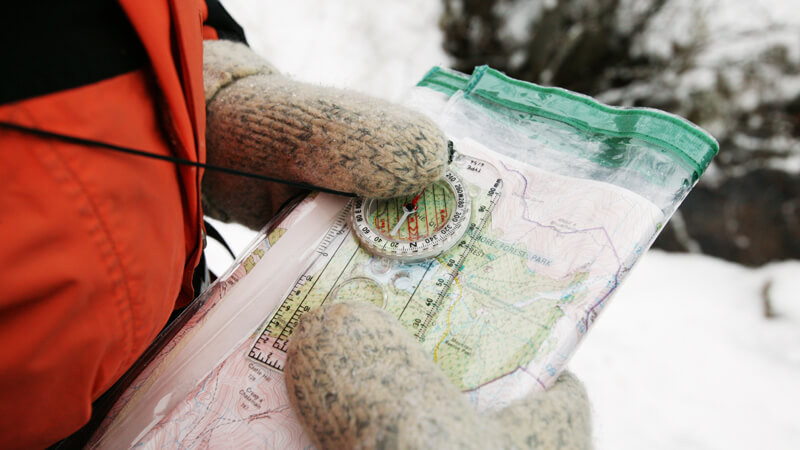
Photo by David Mansell
2. properly fitted backpack
Travel backpacks and school bags have their place, but if you are intending to walk/hike for any length of time (i.e. over 3 hours) you probably want to consider investing in a bag which has a capacity of at least 30 litres and an adjustable strap system. It is extremely important for your comfort, that the bag is adjusted properly for you. If you don’t have a friend who is able to help when you go to choose a backpack; the staff in the shop are usually trained to help.
If you intend to climb, the length of the back system could be very important as the last thing you want while you’re climbing is for your backpack to be hitting the back of your helmet and impeding your vision. This is more likely to be an issue if you are less than 160cm tall.
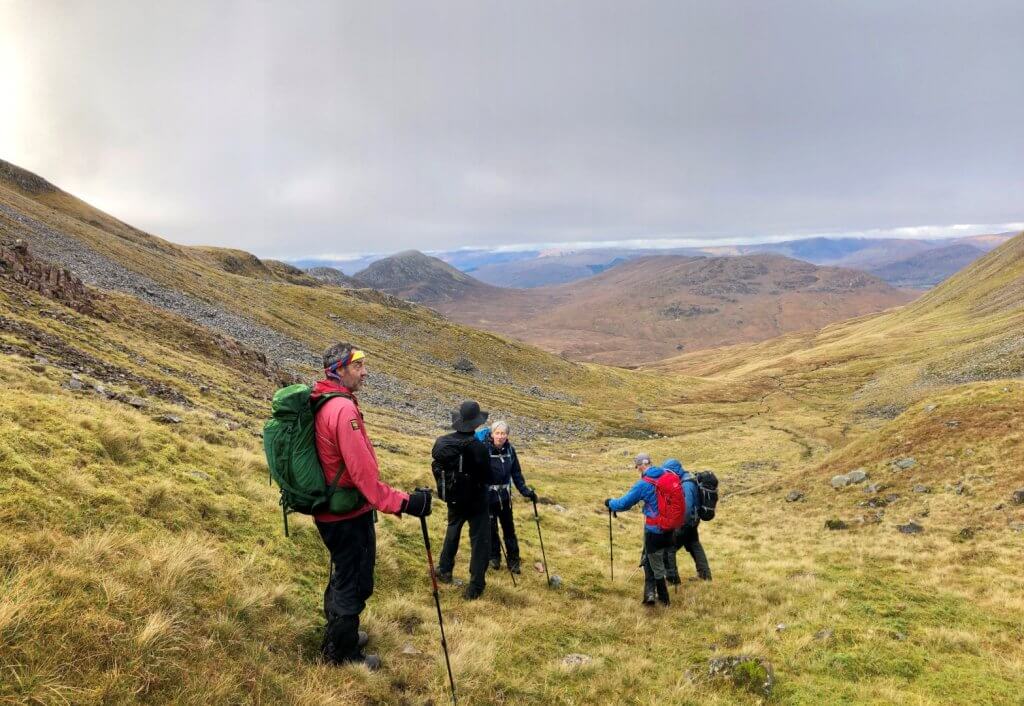
3. sunscreen
Strange as it may seem to some, sunscreen is important even in Scotland. Our days in summer can be very long which means that you could be out in the sun for more hours than you anticipate and there is often very little shade when you’re high in the hills.
4. sunhat
5. midge repellent
The most commonly available midge repellent is Smidge but there are more and more products coming on to the market which are more enrionmentally friendly and good to your skin. Highland Soaps produce a skin cream scented with bog myrtle. Bog myrtle grows wild in the Highlands and naturally repels midges.
There’s also another natural brand called Beastie Be Gone which you might want to investigate.
6. midge net
Only really necessary as a camping addition. If you’re not planning to stop for long then a midge net will probably not be necessary. Also bear in mind that if you are in a windy situation then you won’t encounter any midges anyway as they can not cope with any more than a light breeze.
7. umbrella (might not be as stupid as you’d think)
8. portable shelter
This might be something which lives in the bottom of your backpack and never gets used – but that’s a good thing. If you’re hiking with a guide, you probaby won’t need one either as the guide will carry one as a matter of course for the safety of the group.
A portable/emergency shelter is not necessarily just for emergencies but can provide you with a wind break when you need to take a break to eat or whatever.
9. portable fan
Seriously? Yes, there are occasions when it isn’t windy and cold!
10. walking poles
You’ll find that you’ll get conflicting advice on using poles, depending on who you speak to. My father is against them; I use mine all the time. They are very useful for river/stream crossings; to help with your balance.
If you check out the photo below though, the vote seems to be in favour of poles when hiking here in the Highlands.
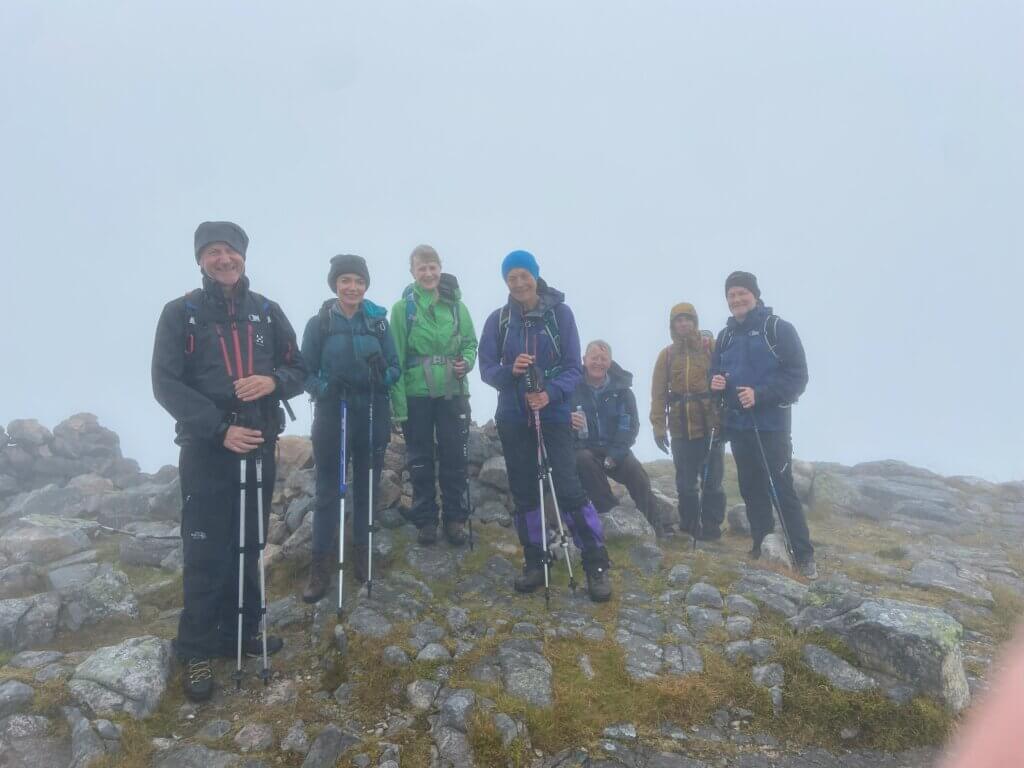
11. compeed (first aid kit)
Possibly the most useful thing to have in your first aid kit. It’s probably worth adjusting your first aid kit if you’ve bought a premade kit. It’s unlikely that you’ll need a huge number of field dressings or slings, but more than likely that you’ll need a stock of compeed for blisters, tweezers (to deal with splinters) , possibly some rehydration tablets and paracetamol.
12. trail mix
You can buy commercial versions but the most satisfying will probably be one that you make up yourself if you have time. We like a home made grain free granola mix. Recipe here.
There’s no chocolate in this particular version but there are plenty of options which contain chocolate: eg white chocolate, cranberry and pistachio.
You could also make a more savoury version or experiment with a high protein mix, depending on what suits your preferences.
13. zip off trousers
Always a good option here in Scotland where you can easily have 4 seasons in one day. Also shorts are not always a good idea if you’re going to be brushing past any undergrowth as you’ll need to be aware of ticks.
14. warm hat
Unfortunately even in what you might consider to be the height of summer (July and August) it can be extremely cold on the mountain tops and it’s not unknown for snow flakes to fall!
15. gloves
You might not need the thickest winter gloves in the middle of the summer season but the wind can pick up at any time and particularly if you’re using poles your hands can be exposed and cool off quite quickly.
16. wool socks (Smartwool)
Wool is worth investing in particularly if you’re going to be hiking for more than one day. It doesn’t smell as quickly as artificial fibres; it breathes and it will be warm even if damp.
17. torch/flashlight
If you’re hiking any time from April to August, the daylight hours will likely be long enough that you might think that you don’t need a torch, but it is a useful piece of kit to have in your bag in case you take a wrong turn or decide to be out longer than you originally planned.
18. dry bag/waterproof pouches
Always a good idea to add a waterproof lining to your bag, even if you have a rucksack cover. Unfortunately rucksack covers can blow off your pack quite easily and then inevitably water will ingress.
19. water
This might seem like an obvious one, but you’d be amazed how many people show up without water bottles for one of our planned hikes. Some kind of reuseable water bottle is always best rather than bottled water from the shops.
20. thermos/flask
A thermos can be used to keep drinks both hot and cold so don’t ignore the opportunity to carry a thermos in the summer.
We’ve covered quite a bit here and you can obviously take all under advisement as the heavier your bag the less likely you are to enjoy the day. It is a balance between weight and what you need to be comfortable throughout the day.
Enjoy!

Playing with lichen


